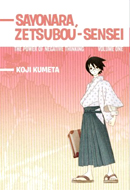   |
Manga-ka: Koji Kumeta
Publisher: Del Rey
Rating: Older Teen (16+)
Released: February 2009
Synopsis: “Nozomu Itoshiki is depressed. Very depressed. He’s certifiably suicidal, but he’s also the beloved schoolteacher of a class of unique students, each charming in her own way: The stalker. The shut-in. The obsessive-compulsive. The girl who comes to class every day with strange bruises. And Kafuka, the most optimistic girl in the world, who knows that every cloud has a silver lining. For all of them, it’s a special time, when the right teacher can have a lasting positive effect on their lives. But is that teacher Itoshiki, a.k.a. Zetbubou-sensei, who just wants to find the perfect place to die?”
Sayonara, Zetsubou-Sensei: another in the long line of popular recent animes that I kept hearing a million things about. Not being not being much of an anime watcher these days, I was fairly content to sit back and let another apparently epic fad past me by. But, when Del Rey licensed the manga, I was presented with the opportunity to finally see what the – admittedly amusing-sounding – story of a suicidal teacher and his class of weird students, was really all about.
The first thing that surprised me about this book was the episodic nature of the storytelling. Each chapter focuses on a different member in a class of students, introducing in this first volume a total of nine female students. Each one is weirder than the last, ironically saving the self-proclaimed ordinary girl for last (who of course is no less unique than any of the others). The book itself opens with “the meeting that never should have happened”, between the class’s suicidal teacher, Nozomu Itoshiki, a depressed man with a horrendously bleak outlook on life, and his class’s most chipper attendee, Kafuka Fura, who so presumably happens to be the most optimistic girl in the world.
Taking a class of students who’re already a bizarre bunch on their own, and tossing in a supreme pessimist with a pension for the dramatics, suffice to say you have an interesting combination. Though Nozomu Itoshiki, or Zetsubou-Sensei as he’s dubbed, remains actively involved throughout the entire book, he still takes somewhat of a backseat attention-wise to the girls being introduced in each chapter, though his interactions with them are rarely short of entertaining.
As a book intended to be a comedy, it pulls it off with a unique tone that plays on macabre themes. I did find a few moments worthy of an out loud laugh though the majority of the book was the amused-chuckle kind of humour, much of it based on surprise value when the story throws you a totally weird curveball.
I don’t want to spoil any of the book’s little quirks by explaining much about the student’s themselves, but I can say that with this oddball diversity at least one of these societal-misfits is bound to have you interested; be it the adorable shut-in, to a girl whose lacking communication skills don’t leave her as passive as she appears (I’d likely call this my favorite chapter if I had to choose one). I don’t know if future volumes will continue this trend of segregated introductions with more students but I’m torn between wanting it to continue doing so for the kicks, or actually bringing together the already assembled for some more involved interaction.
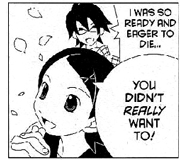 Along with its uniquely macabre sense of humour, this book also comes with an art style that’s both simple but fairly original. All the character designs are very bare in detail with hair styles being the only real defining feature. Fortunately the simplicity of the designs make things like hair style very apparent so telling the girls apart doesn’t prove difficult, especially with such wildly different personalities. Though the occasionally overly-stretched proportions and vacant eyes proved a bit of a visual bump for me, I overall enjoyed the art because the simplicity of it worked as a great vessel for the comedy with easy emphasis on characters both emotionally and while in action. Illustration-wise, I loved the chapter images, which use a style of blackout art that’s really slick. The whole book had a similar charm through use of sharp black and white and sparsely used screen tone.
Along with its uniquely macabre sense of humour, this book also comes with an art style that’s both simple but fairly original. All the character designs are very bare in detail with hair styles being the only real defining feature. Fortunately the simplicity of the designs make things like hair style very apparent so telling the girls apart doesn’t prove difficult, especially with such wildly different personalities. Though the occasionally overly-stretched proportions and vacant eyes proved a bit of a visual bump for me, I overall enjoyed the art because the simplicity of it worked as a great vessel for the comedy with easy emphasis on characters both emotionally and while in action. Illustration-wise, I loved the chapter images, which use a style of blackout art that’s really slick. The whole book had a similar charm through use of sharp black and white and sparsely used screen tone.
And rarely one to disappoint, Del Rey handles Sayonara, Zetsubou-Sensei with a suitable finesse, though one evident of the big cultural differences that make the humor a slightly lacking experience at times. The back of the book is full of detailed translation notes and explanations of references made throughout the book, many of which I never caught onto. It left me feeling like I’d missed a lot (which did at least inspire a sooner-than-later rereading) and also made me wonder if I would’ve found the book a lot more entertaining if I could actually understand Japanese. As good as a translation job is, some things unfortunately will get lost.
That said however, I enjoyed the adaptation work on the writing, which has a certain edge to it when it comes to defining different characters. The short but charged responses of silver-lined, Kafuka, leapt off the page, and though never having watched the anime, I get a very defined shrill voice of cheery optimism in my mind with every line (“As long as you work hard, your dreams will always come true!”). In contrast, of personality not quality, Zetsubou-sensei’s lines have a suitably more depressed, and often slightly drawn-out, way of speaking as he’s always one to make sure he gets in as much pessimism as he can (“I’m in despair! I despair of internet culture!”).
Ultimately I need to give kudos for a series that so quaintly manages to make a story about a suicidal man this endearing, while at the same time being so over-dramatized it never feels offensive towards the seriousness of the issue in real-life context. While there isn’t a lot of bulk to the story, it’s a purposely light and often amusing collection of weirdoes who bring their own brand of strange humour to the mix. While the book didn’t make a huge first impression on me, it’s still such a quirky little series that I can’t help but want to see more of it. Will Zetsubou-sensei ever find his perfect suicide spot? The fact that I wonder with such innocent curiousity free of the want to actually see him die is only further credit to the oddly charming oddity that is Sayonara, Zetsubou-Sensei.
Review written March 20, 2009 by Lissa Pattillo
Book purchased in-store from Chapters


 Follow
Follow
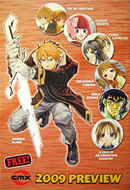





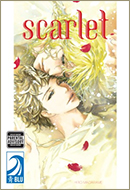








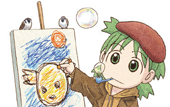









[…] Tiamat’s Disciple on vol. 1 of Nightschool (Tiamat’s Manga Reviews) Lissa Pattillo on vol. 1 of Sayonara, Zetsubou-Sensei (Kuriousity) Otaku Librarian on xxxHolic (The Otaku Librarian) Erica Friedman on vol. 15 of Yuri […]
[…] Sayonara, Zetsubou-Sensei – I’ve already read the first two volumes and didn’t really enjoy them and this sampler reminds me of why. The black and white aspect of the art is pretty spiffy but everyone is rendered far too stiff. I guess it kind of compliments the humour, which I also find pretty rigid. Too bad because the concept is still pretty fantastic: suicidal most-cynical man in the world is teacher to a class of oddities including the world’s greatest optimist. I previously uploaded a review for volume one. […]